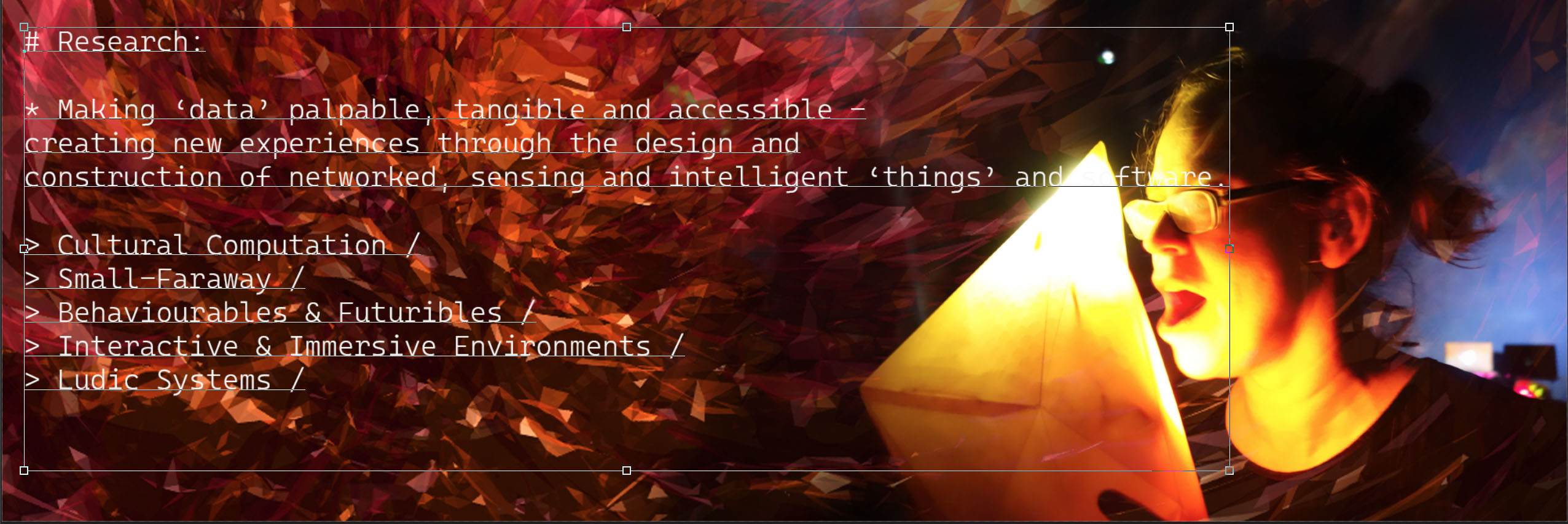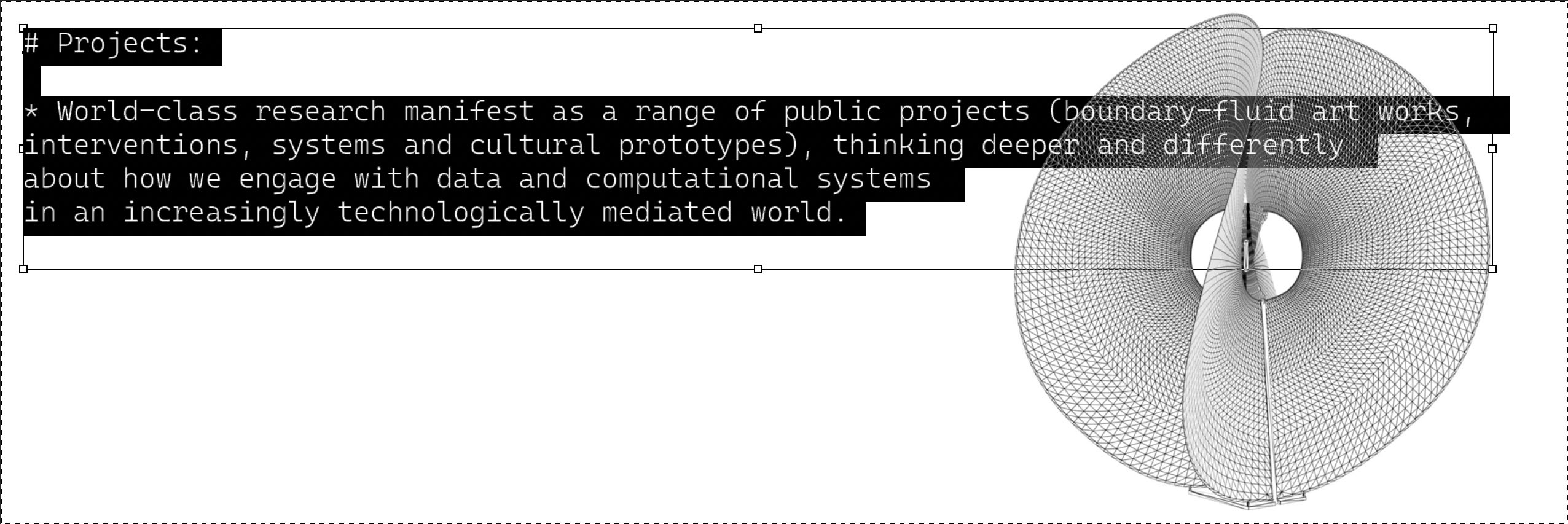The Immersive Vision Theatre

The thing’s hollow – it goes on forever – and – oh my God – it’s full of stars!
(Clarke 1968)




A shared virtual reality… We can fly you to the edge of the observable Universe, through microscopic architectures and nano-landscapes, or immerse you in interactive data-scapes and simulations.
The normal public shows are currently postponed due to the redevelopment of the IVT.
For future bookings and project queries please contact: ivt@plymouth.ac.uk


Immersive Vision Theatre Reboot:
The Immersive Vision Theatre received over £200k for a technical overhaul, made available through University of Plymouth UKRI World Class Laboratories (WCL) award. Working with GaiaNova, we have redeveloped the projection, audio, and media server systems with the single Christie fisheye projector system and redundant additional Zorro projector were replaced by a sophisticated dual fisheye remote light engine projection system and 10.1 audio system.
In many ways this new system and configuration compliments the design of Real Ideas Devonport Market Hall fulldome and offers increased compatibility for production workflows, experimentation and training.
What is Fulldome?

Fulldome is the term used to describe domed projection environments, traditionally found in planetariums. Fulldomes are not panoramas, CAVEs or Oculus Rifts (although many of the underlying technologies are the same), they provide a unique and highly immersive shared audience experience using single fisheye or multi projector systems. The fulldome is emerging from its planetarium shaped incubator into a brave new world of digital projectors, real-time visualisation software, independent content producers and transdisciplinary collaborations. As these technologies and practices evolve you are just as likely to find a VJ in a dome as you are an astronomer.
Research:

Example Research Projects:
Murmuration was one of the outcomes from the E / M / D / L – EUROPEAN MOBILE DOME LAB for Artistic Research.
The IVT is currently supporting the Environmental Futures and Big Data Impact Lab, assisting Devon-based SMEs with creative thinking to address big data and environmental challenges. This £6.4m part-funded ERDF project is delivered by the Universities of Exeter and Plymouth with the Met Office, Plymouth Marine Laboratory, Rothamsted Research, Plymouth College of Art and Exeter City Futures. The University of Plymouth’s partnership is housed in the Sustainable Earth Institute.

PhD Research:
The IVT has supported numerous research and PGR projects including:
involves PGR students from: Coral Manton(i-DAT)/Luke Christison (i-DAT)/Isabella Beyer (Planetary Collegium)/Michael Straeubig (CogNovo).
The extended i-DAT PhD community can be found here: i-dat.org/pgr/
- EMDL – http://www.emdl.eu/
- Fulldome UK festival – http://www.fulldome.org.uk/
- Entomology & the Volumetric Fruit Fly: https://i-dat.org/small-faraway/
- BBC Stargazing Live: http://i-dat.org/heavens-above-100113/ and http://www.bbc.co.uk/programmes/b019h4g8
- Dentistry/Wrigley’s Open Wide Project: http://www5.plymouth.ac.uk/news/world-first-film-aims-to-improve-childrens-oral-health
- Unity3D Game engine for education and science visualizations: Patch-Scape workshop and Data Ecologies.
- Student work & training including: interactive projects, VJing and Animation: Architecture / Nano / Engineering
- Festivals and workshops: CultureTech / Kendal Calling
- Transdisciplinary research projects: https://i-dat.org/research/
- Fulldome productions
- VR Productions (VIVE/Oculus/Android, etc)
- Data visualisation and sonification
- Tours around the observable universe
- Workshops (onsite and mobile) in astronomy, animation, graphic design, game making, film, fulldome photography and video, 3D modelling, science education
- Event venue for digital arts, VJing, fulldome content, live music, performance
- Lecture space.
- Training in the creation of fulldome content.
- Curriculum development and teacher support.
- Access to tools for the creation of fulldome content.
- Mobile tours of the universe for: school visits, public events, festivals, outreach
- Production on tour
- And the Immersive Media Lab: https://i-dat.org/immersive-media-lab/
Fully resourced digital production studio with OS X, Windows and Linux machines running:
- VR production for VIVE, Oculus Rift, Android (Google Cardboard/Daydream/Gear VR)
- Uniview (digital atlas of the observable universe by SCISS).
- Content displaying software includes Resolume, Unreal, Unity3D, VVVV, Max MSP, VLC, etc.
- Development software includes Adobe Master Suite, Fulldome Plugin AE, Unreal, Unity3D Pro, Blender, Mayer, Ableton, MAX/MSP, PTGui, etc.
- fisheye camera production and capture.
- interactive systems, MQTT/OSC control through mobile apps and peripheral equipment (arduinos, sensors, etc).
IVT Venue/System:
Projection System:
- Digital Projection Satellite Modular Laser System.
- Digital Projection HIGHlite Satellite Projector Head x2 (each @ WUXGA resolution).
- Digital Projection Modular Light Source (MLS) Laser Light Engine x2.
- Digital Projection Satelite Control Module (SCM) Image Processor and Input unit x2.
- Connecting Light Pipes.
Media Server:
- Lenovo Thinkstation P620 running Screenberry Media Server
- Protocols: Screenberry Media Server enables:
- NDI® Video over IP,
- RTSP/RTMP video streaming.
- Art-Net, MIDI, UDP, OSC, TCP/IP, RS-232, HTTP, PJLink,
- Spout
- Notch Integration
Audio System:
- 10.1 audio system driven by:
- L’Acoustics LA2Xi Amp 3x
- Merging Technologies Ovation Media Server and Sequencer
- Horus Networked Audio Interface (Sound Card).
Venue Specification:
- 35 seats, 1 removable for wheelchair access
- 25 degree tilt
- truncated fulldome architecture
- Foyer for meeting, drinks, and gallery space.
- Disabled access/toilet.
Changelog: Removed 2022: Zorro Projector / Christie DS+5K. SXGA+ Large Venue 6,500 Lumens Projector / Fisheye Lens: SX8 OmniFocus 600 series.
The system was designed and installed by GaiaNova, the designers of the Devonport Market Hall 15m Fulldome.
Fulldome UK:
i-DAT Proudly Supports FulldomeUK, the international Fulldome festival, http://www.fulldome.org.uk/ 2010/2011/2014/2016/2021/2022.

William Day Planetarium History:
IVT (William Day Planetarium) under construction in 1969:
Zeiss Starball:

Zeiss Starball, the old optical-mechanical constellation projection system originally installed in the William Day Planetarium. The Zeiss-Kleinplanetarium Nr. 1 (ZKP1) Star Ball, had 39 lenses projecting 5000 stars. Manufactured by Carl Zeiss Jena, between 1952-1977. More information on Planetarium projection systems etc can be found here: Le Passage – Towards the Concept of a New Knowledge Instrument by Isabella Beyer.
Dr Percy Seymour:

Dr Percy Seymour (1938-2020) was the Director of the William Day Planetarium until the early 2000’s. Previously a Senior Lecturer at the Royal Observatory, Greenwich, he has published many books and engaged in some interesting debates around cosmic influences. Some of these are discussed here:
and
Ad Astra!
Captain William Vyvyan Day.
Obituary from the Royal Astronomical Society Journal 1978:
William Vyvyan Day was ·born in 1921 June and went to sea in 1937 as an officer cadet. During the Second World War he served on the Atlantic convoys. In 1946 he gained his certificate as a Master Mariner, and he was a member of the South West Company of Master Mariners. Bill’s major contribution to astronomy was in higher education. He Joined the School of Navigation at Plymouth Polytechnic as a lecturer in 1949. His growing interest in astronomical education and his ability to stimulate that interest in the young led to proposals to construct a planetarium at the. Polytechnic. The college and the local education authority backed Bill’s judgement and he was put in charge of the planetarium when it was built in 1969. There are very few planetaria in the British Isles. Bill Day showed how a man with energy and dedication can improve on this lamentable state of affairs.
Although the planetarium is an aid in teaching those elements of positional astronomy that are essential to navigation, its value goes far beyond that. At Plymouth, Bill designed courses that would appeal to the schools as well as the Polytechnic. In only seven years he lectured to at least 6000 people in the planetarium and built up wide following for astronomy in the Plymouth area.
In 1976 he visited East Germany to see the Zeiss works, the Leipzig Fair and various planetaria in order to formulate plans for further development. He was anxious to establish a teaching observatory on a reasonable site not too far from Plymouth. In 1976 he was elected a Fellow of the Royal Astronomical Society. He died in 1977, aged 55, after a short illness.
On 1977 October 8, Captain Day’s widow Valerie and his children Simon and Sarah attended a ceremony at the Polytechnic at which the planetarium was re-named The William Day Planetarium. The citation describes Captain Day as a ‘seaman, navigator, astronomer, principal lecturer in astronomy, designer of this planetarium, but above all a teacher who inspired all who knew him’.
Simon Mitton
@ Royal Astronomical Society. Provided by the NASA Astrophysics Data System.
Support:


































You must be logged in to post a comment.